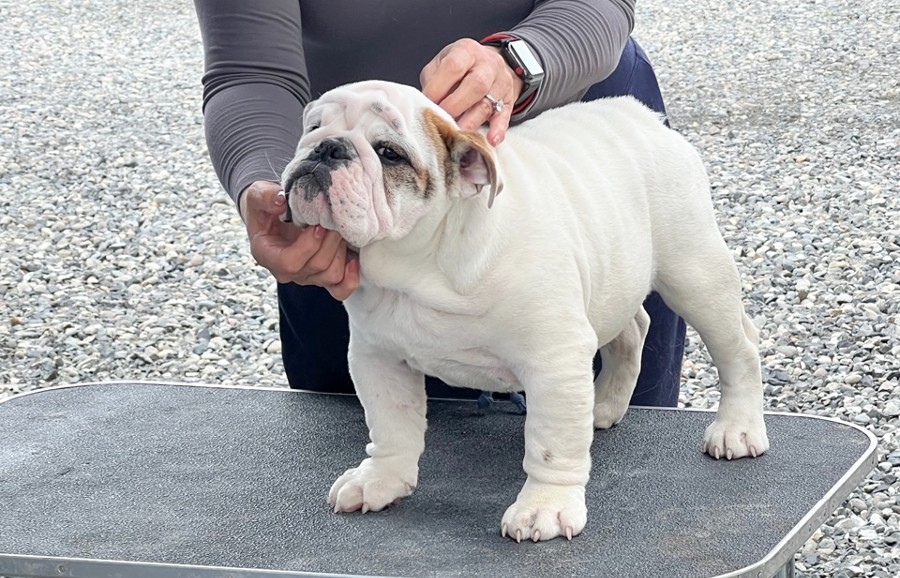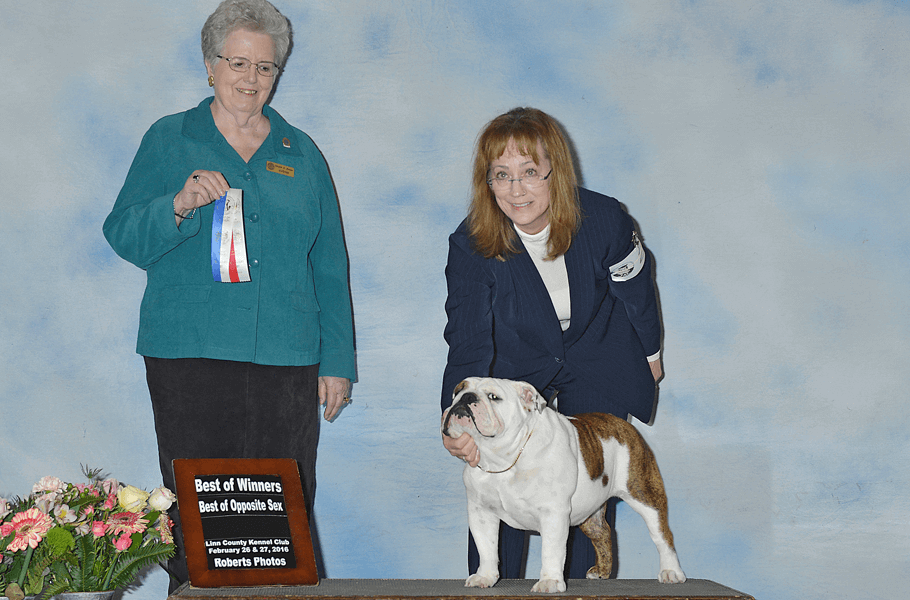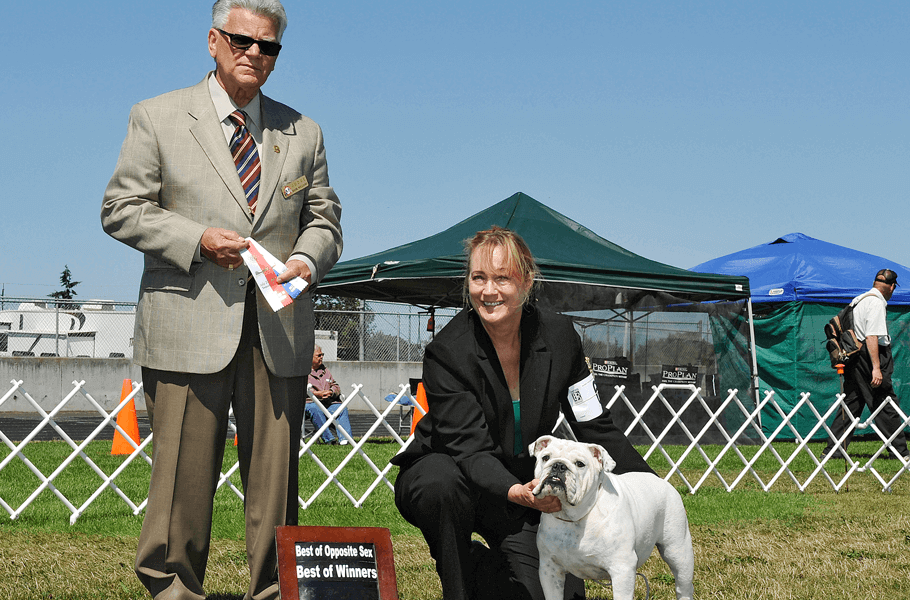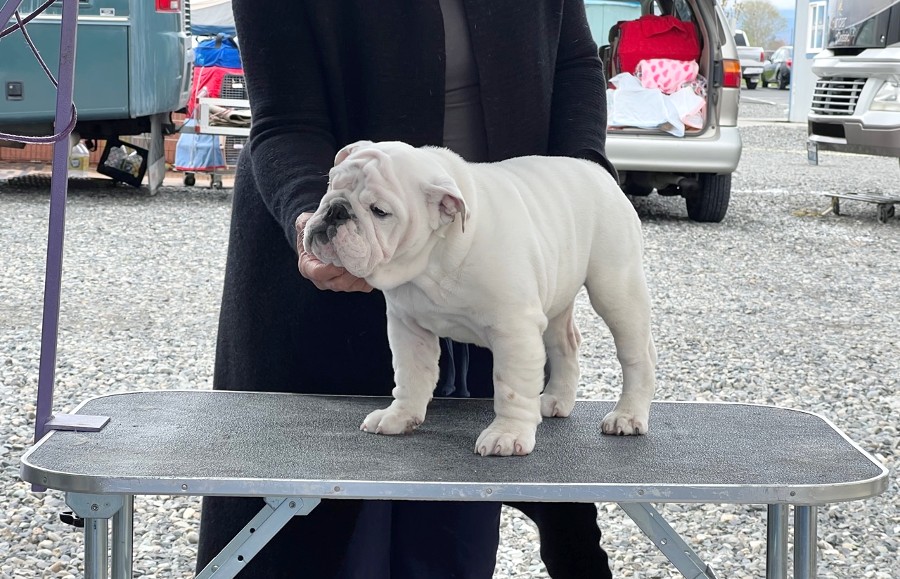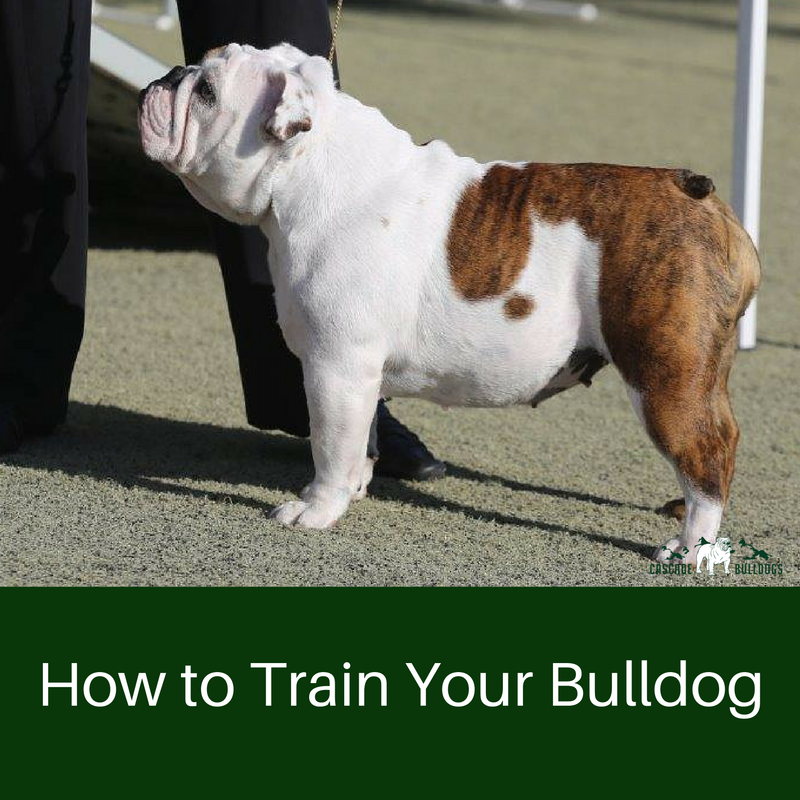Bulldog Training
Bulldogs may have a reputation for being stubborn and hard-headed, but that doesn’t mean that they’re impossible to train. Their intelligence and amicable nature make them great at learning everything from the basic “sit” and “stay” commands to even the most advanced show tricks. This detailed guide provides you with everything you need to know to train your bulldog and provides tips for training both puppies and adults.
Bulldog Puppy Training: 7 Tips to Keep in Mind
Training your bulldog puppy is both fun and rewarding. But it isn’t always easy. It takes time, effort, a lot of love and understanding. The following are several tips to get you started.
-
Know that your bulldog puppy is still an infant
You wouldn’t expect a six-week-old newborn to change her own diaper, so don’t expect your dog to know everything right away. Your expectations should be tempered, as your bulldog’s mind is still growing and maturing. Be patient with the process. Love him at all costs and you will both learn together. The next thing you know, you will look over your shoulder and he will be a full-grown bulldog. Enjoy these puppy times—they don’t last long!
-
Show, don’t just tell
Puppies speak in an adorable combination of yips, whines, and tiny barks. They do do not speak Human. “No”, “sit” and “stay” may well become commonplace words in your household eventually, but they are not innate. Your confused little guy has no idea what “no” means. For all he knows, its your your favorite slippers or those delicious things you give him out of the crinkly bag in the cupboard. He sure loves those! So instead of expecting him to understand exactly what you mean, show him instead by using both verbal commands and hand signals. Once you are sure he understands, repeat the hand signal over and over. Puppies are full of love and energy, and are easily distracted by the world around them. Be firm, be loving, but most of all, be consistent.
-
Provide spontaneous rewards
Remember that teacher in high school who only singled you out when you were doing something wrong? That wasn’t a very fun class to be in. Conversely, remember your favorite teacher, who not only inspired you and your classmates, but also made learning fun and exciting by recognizing and rewarding your unique talents and abilities? Be that teacher. Every once in a while, reward your pup for just “being him.” While it’s great to reward good behavior, it’s also important to occasionally give your pup praise, a treat or a toy for no reason at all. A “good boy” and belly rub will help cement your relationship and can go a long way in inspiring loyalty and obedience in your pup.
-
Learn bulldog body language
Your pup may not speak English, but he does know how to tell you how he is feeling. Read up on doggy body language, observe, watch a YouTube tutorial or even take a class. It doesn’t matter how you learn it, but it’s important that you do. Becoming fluent in verbal and non-verbal canine communication will not only help you in the training process, but it will also help to ensure your bulldog puppy grows up to be a secure and emotionally-stable dog.
-
Keep your bulldog puppy in a safe and secure environment
Like a toddler, a puppy should always be directly supervised whenever possible. When supervision is not possible, he needs to be in a secure and safe environment where he can’t hurt himself, others, or get into the proverbial “cookie jar” (or, as often is the case, the garbage can). Providing him with a safe space and some fun toys to keep him occupied will benefit both you and your dog. You’ll be gaining peace of mind knowing knowing your new leather sofa will remain in one piece while you’re away, and he’ll feel comforted knowing he is safe and loved.
-
Reward good behavior
Always get excited and thank your bulldog when he comes to you, even when you didn’t call him. This will save you hours of training the command “Come” or “Heel” because it will reinforce your expectations organically, making extra training unecessary. Conversely, never raise your voice at your pup for coming to you, even if he was naughty. Call him in an excited and playful tone.
When your pup does something good, reward him immediately. Give him a scrumptious treat and lots of “good boys”. Rewarding good behavior tells your pup he is doing something positive, which will motivate him to continue doing it.
-
Ignore bad behavior
Simply put, your puppy wants all of your attention all of the time. While he may prefer positive attention, he’ll settle for negative attention if that is all that’s available. That is why it’s important that you don’t accidentally reward negative behavior by focusing on it. If your bulldog pup does something naughty, resist the temptation to yell or reprimand. Instead, ignore it. Turn your back, cross your arms across your chest and move away. This shows the bulldog you are the leader and the behavior he exhibiting is unacceptable.
Of course, if your bulldog is engaging in a behavior that is dangerous to himself or others, a shout or strong reprimand may be necessary. He will need to learn that running into traffic or chasing the mailman is not okay under any circumstances. However, if he is in a safe environment and is engaging in attention-seeking behaviors—such as jumping on your legs or scratching at the furniture—ignoring the behavior can have a powerful and immediate effect.
Tips for Training an Adult Bulldog
Bulldog training works best when you start when the bulldog is just a puppy—the earlier, the better. But unlike the old adage “you can’t treat an old dog new tricks,” it’s never too late to teach your bulldog proper behavior. An old dog can learn new tricks if you have the patience and determination to remain consistent and vigilant.
-
Know the breed
Before you begin training, it’s important to first familiarize yourself with bulldog characteristics and common pitfalls. While bulldogs are known for being affectionate, friendly and intelligent, they can also be stubborn and ‘bull-headed’ as well. While this doesn’t mean training will be impossible, it could make the process a challenge. Bulldog training requires plenty of patience and dedication.
Unlike many other breeds, bulldogs tend to overheat quickly. This is important to keep in mind when you’re training a bulldog outside during summer months.
Recommended reading:
It can be easy to assume that because bulldogs are generally relaxed and easygoing that they’re lazy. But the fact is that like any breeds, bulldogs require regular exercise in order to remain fit and healthy. In fact, when a bulldog isn’t exercised enough, he can become stubborn and even destructive. Bulldogs need to burn off pent up energy and if they aren’t able to do this on walks or daily romps in the backyard, they’ll burn off the energy by chewing on shoes or tearing through the trash.
-
Be a strong leader
An untrained adult bulldog has likely learned several bad behaviors. In order to help un-train him, you’ll need to establish that you’re the pack leader—the alpha dog—and make your bulldog understand that he must obey your orders. Remember that bulldogs are smart but they’re also stubborn as well, so establishing dominance may take some work. Speak with a firm and deep tone of voice and be consistent. Avoid yelling and never resort to hitting or any other violent behavior.
-
Socialize your bulldog with other dogs and pets
Bulldogs are known for being great family dogs (read: Are bulldogs good with kids?), because of their sweet and affectionate disposition. Some bulldogs, however, can be aggressive with other dogs or family pets (like cats), so it’s important to reward your bulldog for good behavior during social situations. This will teach your bully that socializing with other pets can be a fun and enjoyable experience. Taking an obedience class with other dogs can help with this as well.
General Tips
-
Start obedience training early
The earlier you can start training your bulldog puppy, the better. This will not only make your bulldog more obedient and well behaved, but it will also establish a hierarchy in the relationship and teach your bulldog that he isn’t in charge. While there are numerous tricks you can teach your dog, the best ones to start with are “Sit,” “Stay” and “Down.”
Keep your training short yet consistent—about 5 to 10 minutes a day. Consistency will help your bulldog from regressing to stubborn tactics and short training periods will ensure your bulldog doesn’t become bored and uninterested in the learning process.
Read: Dog Show Tricks to Teach Your Bulldog
-
Safety training is important, too
“Leave it” and “drop it” are two commands that are important to teach your bulldog along with basic obedience commands. These will keep your bulldog safe during walks and will prevent possessive behavior and fights over food or toys.
-
Be knowledgeable about common bulldog health problems
As previously mentioned, bulldogs can easily overheat because of their shortened breathing passages. It’s best to train your bulldog in a climate-controlled environment to avoid overexertion and breathing problems.
Keep in mind that bulldogs can suffer from hip dysplasia, arthritis and other health conditions, which may affect their agility levels. As you can see from the video below, bulldogs that have been breed well are perfectly capable of performing any number of tricks, including running and jumping. But if you are unsure of their physical capabilities, it’s best to check with a vet in order to prevent any accidental injuries.
Never use a choke collar on a bulldog, as a bulldog’s narrow trachea could become damaged. Use a harness instead.
Being a bulldog parent can be frustrating sometimes, but it’s well worth it. You can’t begin to put a price tag on a bulldog’s snuggles, doggy kisses, or even the excitement you see in his eyes when you walk through the door each evening. Love them and they will love you back unconditionally.





